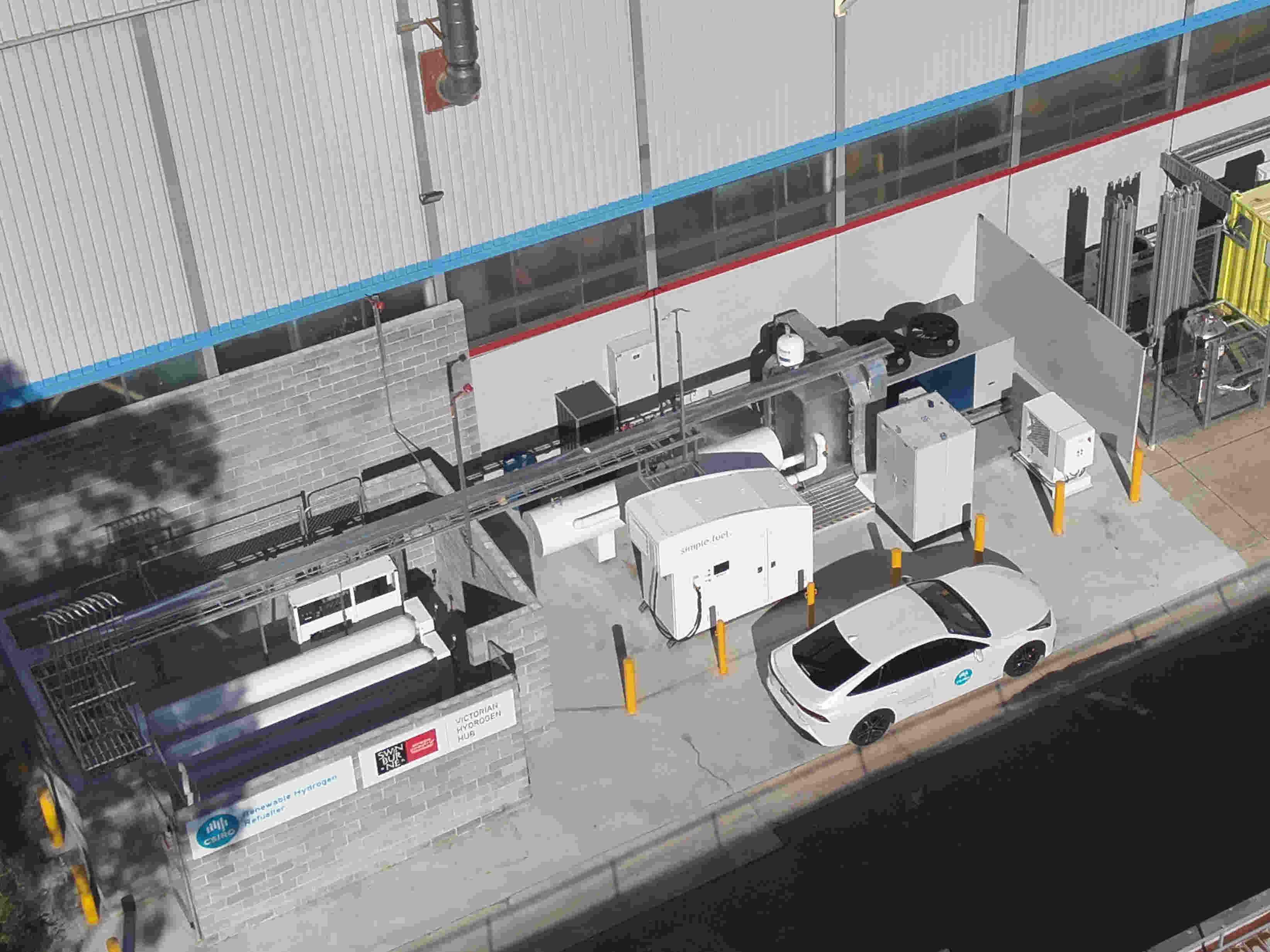Our Hydrogen Industry Mission launched in May 2021. It focuses on leveraging CSIRO's hydrogen research capabilities in partnership with government, industry and the research community.
One of the mission's key pillars focuses on demonstration projects, which are collaborative partnerships to demonstrate technologies that validate hydrogen value chains and de-risk enabling technologies, to inform investment and deployment decisions.
Our Hydrogen Technology Demonstration Facility in Clayton, Victoria, forms a key pillar of the Victorian Hydrogen Hub, a collaboration with Swinburne University of Technology and the Victorian Government. It enables industry and researchers to trial new hydrogen technology.
The Hydrogen Technology Demonstration Facility includes a refuelling station, hydrogen production and storage facilities to bring researchers, industry partners and businesses together to test and demonstrate emerging hydrogen technologies.
Refuelling station
Hydrogen is a clean fuel source, but a major barrier to using it to power cars and trucks is working out how to refuel, and a lack of refuelling infrastructure.
Our hydrogen refuelling station is a significant step towards removing that barrier.
CSIRO and our partners refuel a fleet of hydrogen cars as a trial and an example of 'real world' use. There is potential to expand to provide refuelling to other zero-emission vehicle trials in the local area.
How our hydrogen refuelling station works
Other hydrogen technology demonstration capabilities
In addition to the refuelling station, the hub houses hydrogen production and storage facilities, and is a location to bring researchers, industry partners and businesses together to test, trial and demonstrate new and emerging hydrogen technologies.
These technology demonstration opportunities span across the hydrogen production value chain, including:
- production
- separation and purification
- storage and transport
- dispensing
- utilisation.
The Hydrogen Technology Demonstration Facility is already being used to test novel hydrogen technologies.
Our Hydrogen Industry Mission launched in May 2021. It focuses on leveraging CSIRO's hydrogen research capabilities in partnership with government, industry and the research community.
One of the mission's key pillars focuses on demonstration projects, which are collaborative partnerships to demonstrate technologies that validate hydrogen value chains and de-risk enabling technologies, to inform investment and deployment decisions.
Our Hydrogen Technology Demonstration Facility in Clayton, Victoria, forms a key pillar of the Victorian Hydrogen Hub, a collaboration with Swinburne University of Technology and the Victorian Government. It enables industry and researchers to trial new hydrogen technology.
The Hydrogen Technology Demonstration Facility includes a refuelling station, hydrogen production and storage facilities to bring researchers, industry partners and businesses together to test and demonstrate emerging hydrogen technologies.
Refuelling station
Hydrogen is a clean fuel source, but a major barrier to using it to power cars and trucks is working out how to refuel, and a lack of refuelling infrastructure.
Our hydrogen refuelling station is a significant step towards removing that barrier.
CSIRO and our partners refuel a fleet of hydrogen cars as a trial and an example of 'real world' use. There is potential to expand to provide refuelling to other zero-emission vehicle trials in the local area.
How our hydrogen refuelling station works
Other hydrogen technology demonstration capabilities
In addition to the refuelling station, the hub houses hydrogen production and storage facilities, and is a location to bring researchers, industry partners and businesses together to test, trial and demonstrate new and emerging hydrogen technologies.
These technology demonstration opportunities span across the hydrogen production value chain, including:
- production
- separation and purification
- storage and transport
- dispensing
- utilisation.
The Hydrogen Technology Demonstration Facility is already being used to test novel hydrogen technologies.


